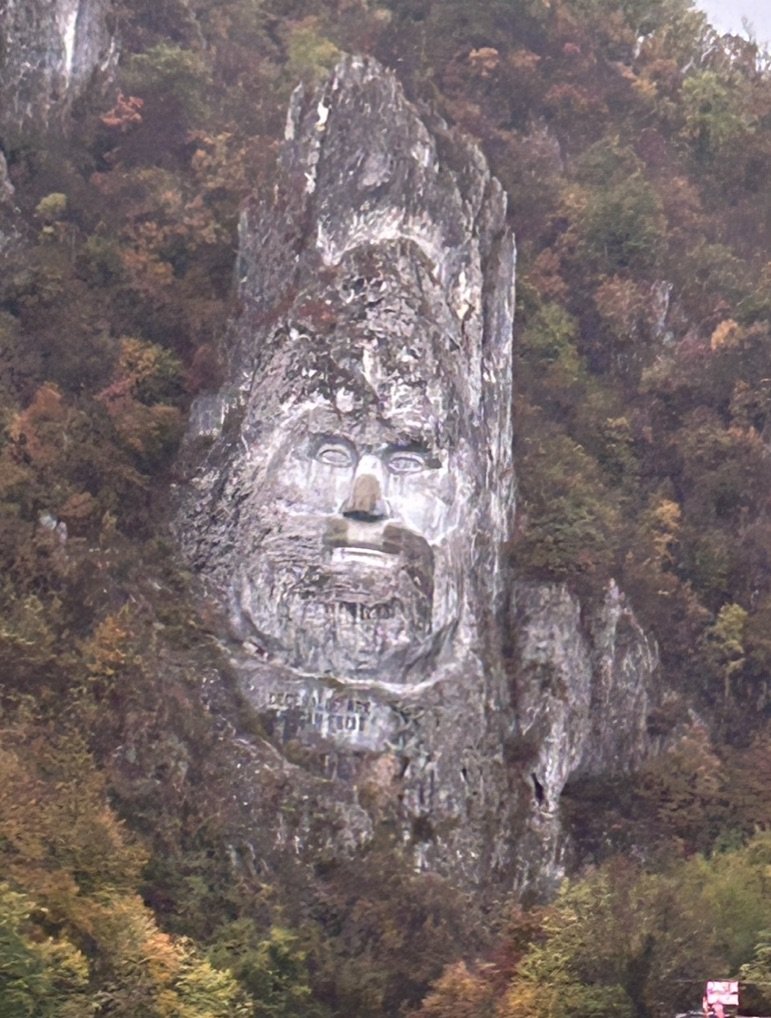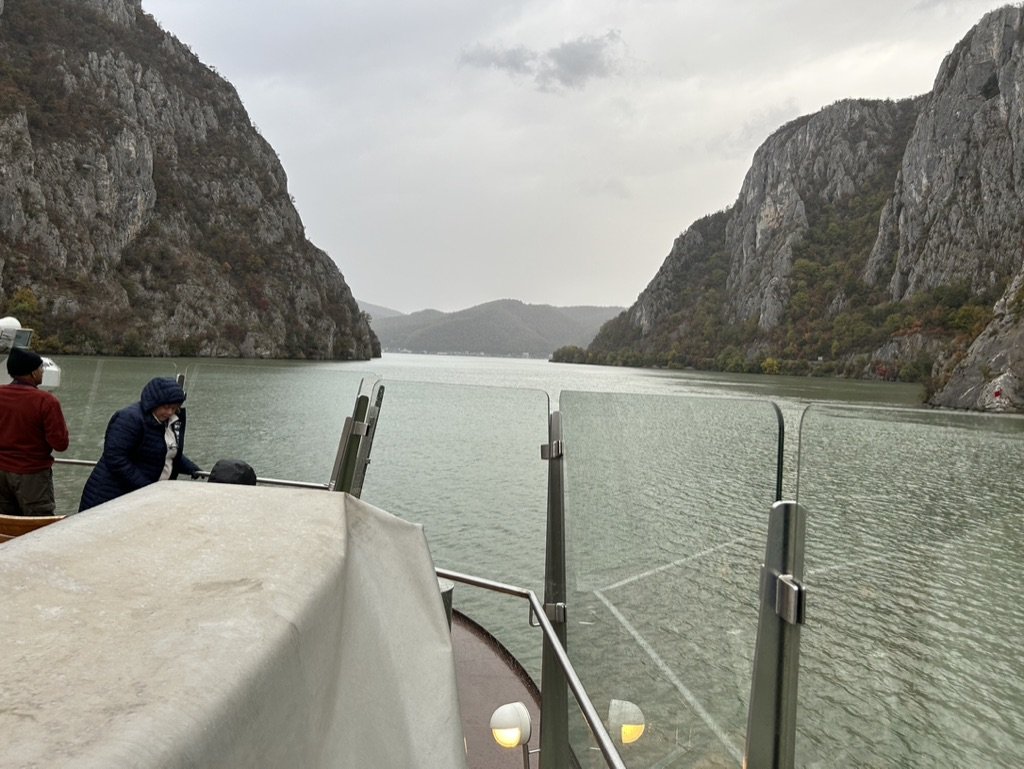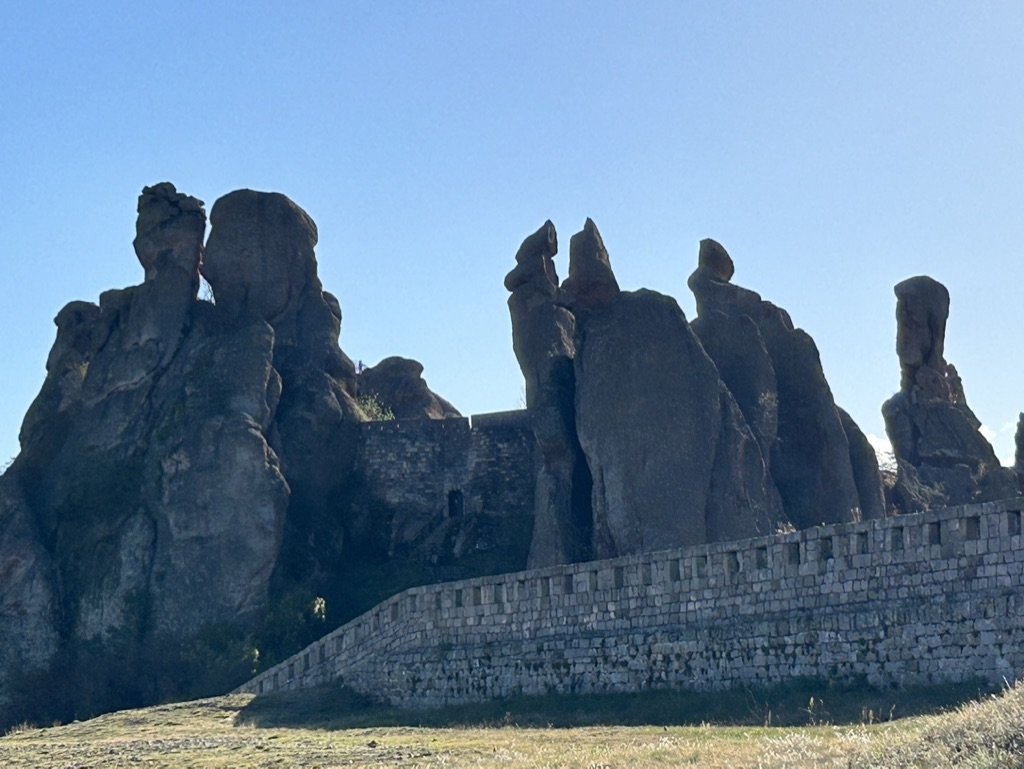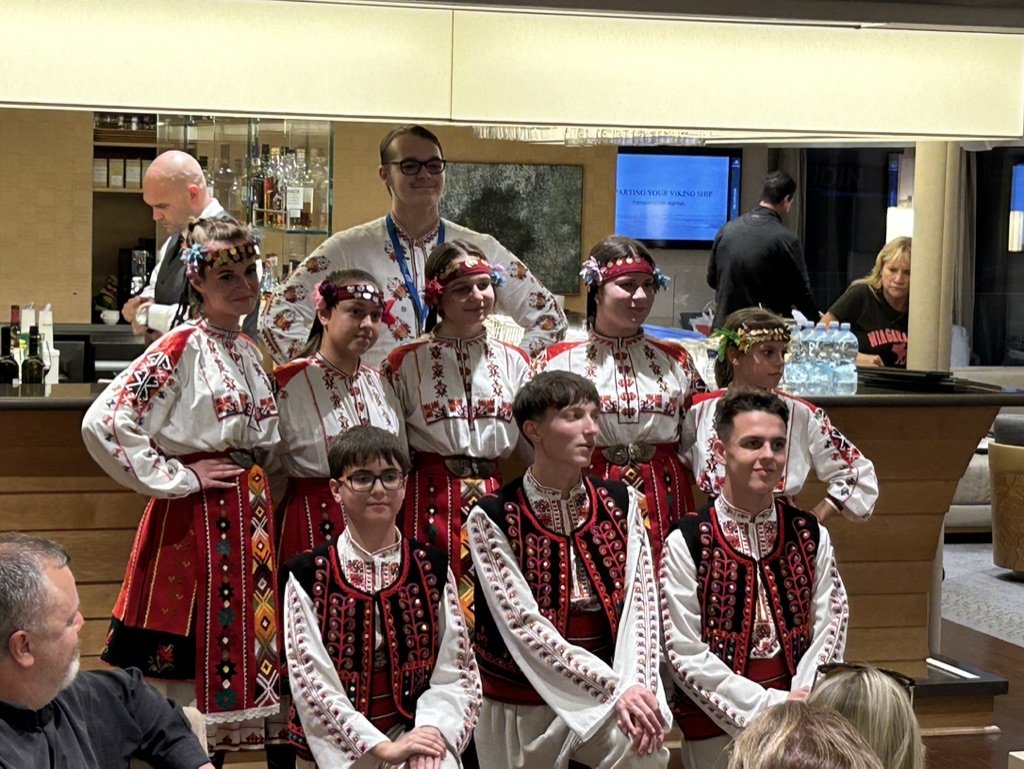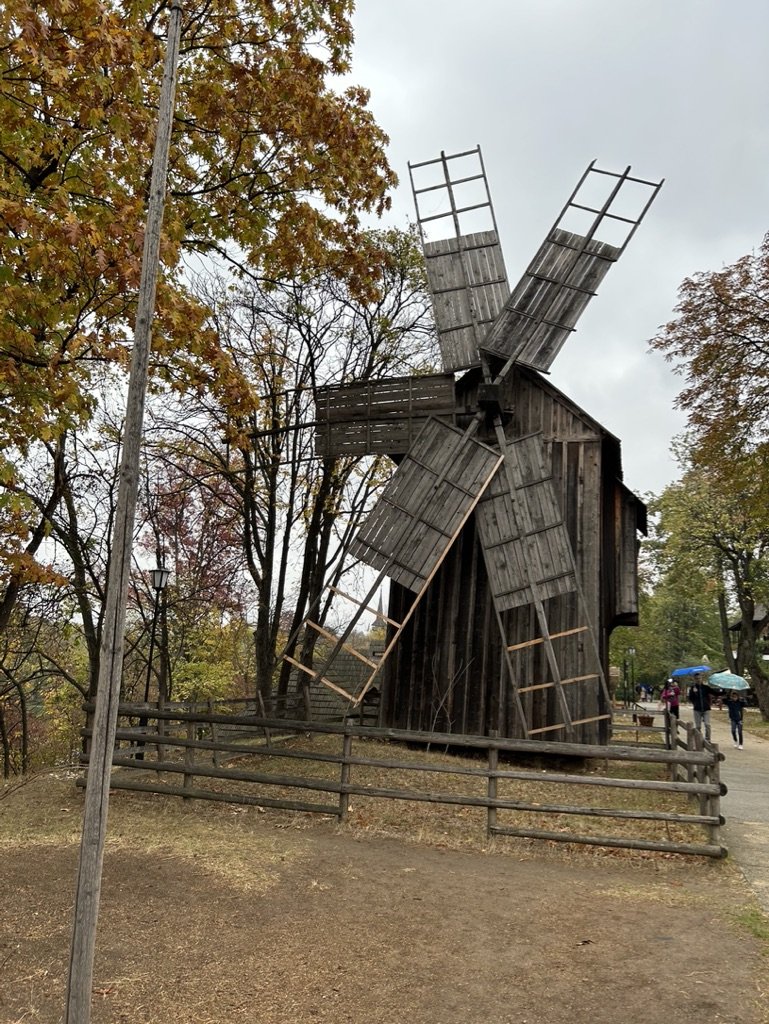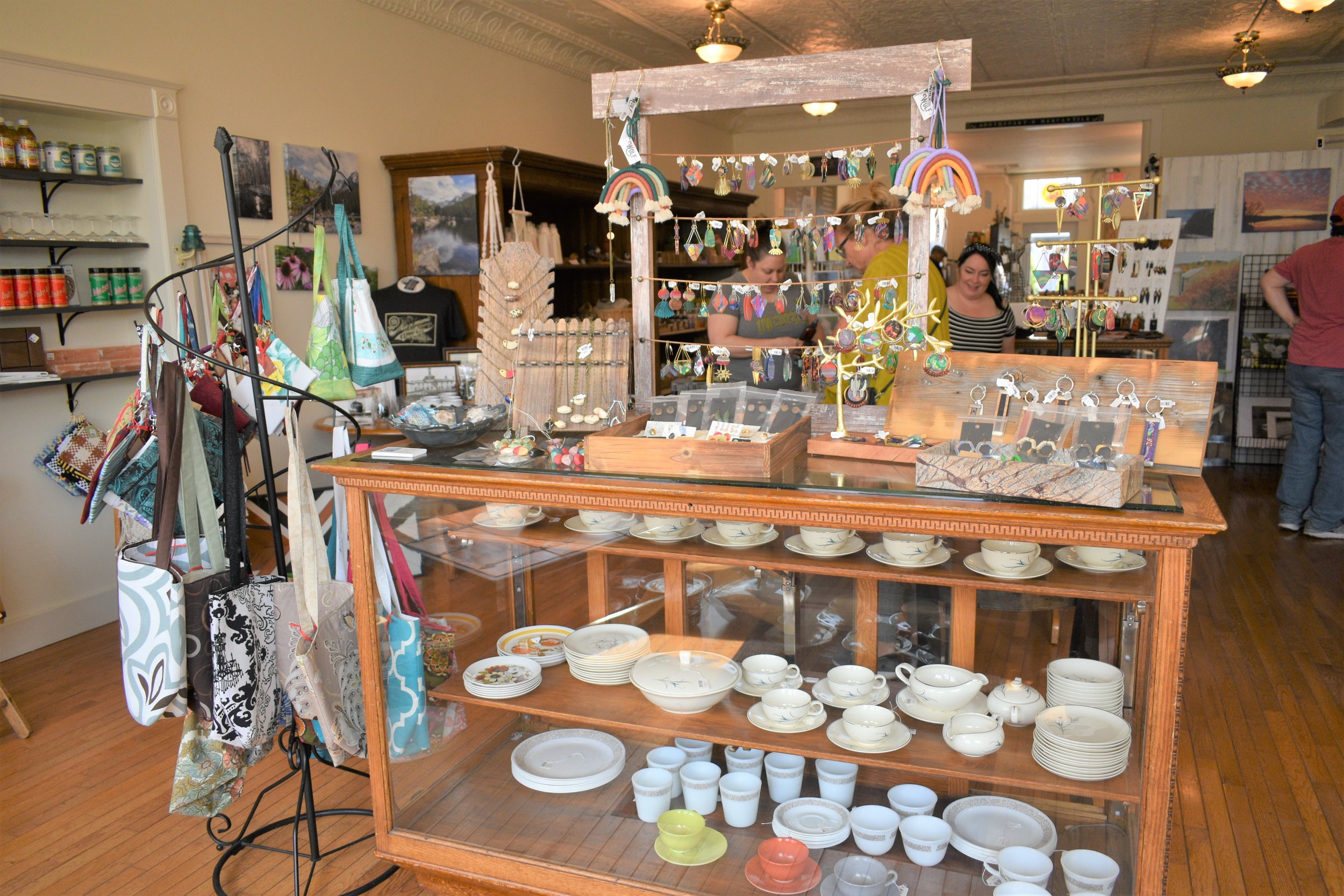An Eastern Europe Tour: a perspective from Driftless folk (part 2)
The very word, Balkanization, has come to mean the fragmentation of an area, country, or region into multiple smaller and hostile units. How this process came to be in Yugoslavia was the subject of a brief lecture by local historian Srdjan Ristic in the lounge of the Viking Ullur while it was docked in Belgrade.
Various prehistoric cultures existed in the area before tribes of Thracians and Dacians ruled it, followed by Celts and then the Romans. Constantine the Great, the first Christian Roman Emperor, was born in what is now Belgrade. Another well-known name is Attila the Hun, who ransacked the city in 442 AD. With the arrival of the Slavs, Serbia came under control of the Byzantines. It held out for centuries against the Turks but was conquered by Suleiman the Great in 1521. The Austrians and Ottomans struggled for control until 1867, when the Turks left for good.
Each of these cultures left its mark on the lands that became Yugoslavia in 1929. For example, Bosnians had become Muslims under Ottoman occupation, while Croatians are mostly Roman Catholic, and Serbs are mostly Orthodox. Given the ethnic and religious differences within the country, it is small wonder that Yugoslavia began to break apart after the iron hand of Josip Tito was lifted by his death in 1980. The horrible civil war that resulted, with neighbor fighting neighbor in cities like Vukovar, Croatia, was a sober reminder to Ristic’s audience that, despite our differences, we must listen to one another, focus on our commonalities, and love one another.
Our shore excursion in Belgrade took us to St. Sava’s Cathedral, one of the largest Orthodox buildings in the world, and to the Kalemegdan Fortress, which once contained the entire city. Belgrade, in fact, translates to Kalemegdan, which means “white city,” so called for the white stone ridge upon which it sits. Today, the walled fortress contains several museums and gardens; it is a favorite place for a Sunday stroll, with its spectacular views of the Sava and Danube rivers.
With some time on my hands before I had to return to our tour bus, I set out along the main shopping street at the end of the Kalemegdan park in search of a souvenir for my daughter-in-law. She is a huge fan of Preki, a 1980s soccer superstar from Belgrade, and I thought that she would love a tee shirt from the Serbian team. Despite our guide’s warning that merchants are not allowed to take Euros, I found a street vendor who was happy to accept my money. He did not have the correct change in Euro currency, however, so he smiled and told me to take the tee shirt at a discount. that did not seem to me to be the act of a “Serbian bad boy.” People are people, it seems, the world over.
Our ship made one more stop in Serbia—the Golubac Fortress, at the entrance to the “Iron Gate,” a series of four narrow gorges where the Danube separates the Carpathian and Balkan Mountains. This strategic location, which also separates Serbia and Romania, is a logical location for a fortress. Built on steep, inaccessible cliffs, and protected by the Danube River, it was a coveted prize fought over by armies of Hungary, Serbia, and the Ottoman Empire. As a cultural property of exceptional significance, the palace, fort, and museum are maintained as part of the “Golubac Fortress” Tourist Area. Passengers of the Viking Ullur were allowed one hour to explore the Golubac Fortress by foot. That was hardly sufficient to soak in the eighth-century history of the walled complex, but it did convey an impression of its strength and importance. A short walk through the museum gave us a glimpse of the weapons of medieval warfare. Photos of the explanatory signage throughout the tour and online research would have to fill in the gaps at a later date. The captain wanted everyone back on board to ensure that we sailed through the “Iron Gate,” considered one of the most scenic sections of the Danube, during daylight hours. Once a treacherous stretch of the river, filled with rocks and rapids, these narrow gorges were made more passable in the first century AD, when the Roman emperor Trajan built canals, and again when the first Iron Gate Dam opened in 1972.
The Romanian and Serbian governments created national parks on their respective sides of the “Iron Gate” to enhance its natural beauty. Lynx, bears, wolves, and jackals inhabit these wild lands, as well as some man-made monuments: the Tabula Traiana, built by the Romans, and the 141-foot tall face of Decebalus, a Dacian ruler who fought the Romans and is hailed as a Romanian hero.
Yes, or no? We learned, as our cruise arrived in Bulgaria, that nodding “yes,” as we Americans do, means “no” in Bulgaria. Conversely, a side-to-side head shake is a Bulgarian’s way of responding in the affirmative. The circular thumb-and-index-finger gesture that we use to indicate “okay” means “zero” to Bulgarians, so it’s best not to offer it to mean that something is fine. What else would we learn about the culture and history of this ancient land in the next two days?
The “Baba Vida” is a fortress embedded in the Belogradchik Rocks, a 45 million-year-old limestone formation. The 650-foot-high rocks were a natural bulwark with a compelling history. With a little imagination, one can see in the rocks the beautiful nun who was cast out of the convent when she became pregnant with a man on a white horse. Another formation, visible if one squints just a little, is the Schoolgirl.” A beautiful girl falls in love with a blacksmith. Her schoolmaster chases her into the path of a bear, and they are all turned to stone. Legends such as these provide insight into the soul of a people as well as material to entertain tourists.
The Baba Vide fortress was built into the Belogradchik Rocks beginning in the 10th century, legend has it, by Vida, daughter of a wealthy Bulgarian aristocrat. Vida shunned all proposals because her two sisters were unhappily married. Again, it is interesting to speculate on the cultural implications of such a story.
My ascent to the highest point in the Belogradchik Rocks was a challenge with my arthritic hip, but the view made it worth the effort. Back on the ship that evening, we were treated to a song and dance performance by the Vidin’s Children’s Chamber, followed by a Q & A session with several young people. The students shared their hopes and dreams for the future, including possibilities that would not have been available to their parents under Communist rule. For example, one young man plans to attend the American University in Sofia to pursue studies in international relations.
The following day, our shore excursion took us to Veliko Tarnovo, a city of some 71,500 population, known as the historical capital of the Second Bulgarian Empire. It is about 56 miles from the Danube, so our bus made a rest stop at the “Kaloyanova Fortress,” a banquet venue styled as a castle. The opulent facility was, indeed, fit for a queen.
Upon our arrival at Veliko Tarnovo, our guide pointed out some of the palaces of the Bulgarian emperors and the Patriarchate. During the Middle Ages, the city was among the main European centers of culture. Our group paused at the entrance of the Tsarevets Fortress, where we were given two options: hike to the hilltop castle, some distance away, or study a model of the walled fortress complex, leaving time to visit the shops before our bus’ departure. Barb and I chose the latter option. She found a colorful Bulgarian peasant blouse, and I bought a wallet made from defunct Communist currency, which may be a conversation starter at Kwik Trip.
Back on board the bus, we drove to Arbanasi, a village in Veliko Tarnovo Province, for a delicious lunch. Our experience included Bulgarian dancers in traditional costumes and strong Bulgarian wine. After lunch, I decided to tag along with the walking tour of some sights in the village while Barb stayed at the restaurant and relaxed at an outside table. Our guide showed us a museum and some traditional stone homes, but the most impressive of these sights was the Cathedral Nativity. The church consists of an alter, a nave, and a narthex dating from the sixteenth and seventeenth centuries. What makes the Cathedral Nativity unique is that every wall and ceiling is covered with depictions from the Bible. After seeing the Cathedral Nativity, I decided to leave the group and take a walk. The two glasses of wine with my lunch did wonders for my arthritis. I managed to lose my way, but I wasn’t too worried at first; getting lost in foreign countries are one of my favorite activities.
But as the departure time of our bus approached, I began to panic. How would I get back to the ship, over 50 miles away? Barb must be out of her mind, worried about me. I enquired at a small store, but the proprietor did not speak English, and my Bulgarian is a little rusty. Using sign language, he directed me up the road a short distance, and there was our tour bus. Barb was waiting impatiently at the restaurant. She was, well, a bit perturbed at my tardiness. All’s well that ends well, however; we arrived at the ship in time for dinner and the evening’s cultural lecture.
As a prelude to our final port of call, Giurgiu, Romania, the Viking Ullur’s program director Sonya donned a black cape and gave us some facts on the real Dracula. Associated with the Transylvania region of Romania, Vlad III, “The Impaler,” actually did most of his bloody work in Wallachia, a former principality in what is now Romania. He allied himself with his former captors, the Ottomans, to take Wallachia. He fled from, but later aligned with the Hungarian king Corvinus against the Ottomans, killing some 23,000 Turks. After retaking Wallachia with the help of Hungarian troops, he was later arrested by Corvinus. In addition to being a rather fickle chap, Vlad was infamous for his cruelty, viewing some of the thousands of his impaled enemies while enjoying sumptuous meals. Still, Vlad III remains a folk hero to many Romanians for holding the line against the Ottoman Empire. Some folks are blind to their hero’s crimes.
We disembarked the Ullur early on the final day of our Eastern European cruise, but Viking ensured that the trip to our Bucharest hotel would be as culturally enriching as the previous shore excursions had been. Escorted to our busses by the local canine welcoming committee, we settled in for the 70-mile drive to Romania’s capital city.
Someone on the bus noticed the almost unbroken stream of trucks headed North. Our guide explained that the trucks were transporting supplies to Ukraine. That made the war feel uncomfortably close. Arriving in central Bucharest, we drove past the Palace of Parliament, the world’s second largest building (after the Pentagon), built by the former communist dictator, Nicolae Ceaușescu. The building has eight underground levels, the deepest housing a nuclear bunker, linked to other critical government institutions by 12 miles of tunnels. Nicolae Ceaușescu feared nuclear war. Our guide told us that after Ceaușescu’s death in 1989, several developers offered to purchase the building, including Robert Murdock and Donald Trump, but their bids were unsuccessful. Contrary to my expectations, Bucharest revealed itself to be a beautiful city of French-style boulevards and lush gardens. Our group walked through the historic city center, where we had lunch and enjoyed traditional Romanian music and dance. On our way back to the bus, we noticed several construction sites where buildings that had been damaged during the 1989 revolution were being restored to their original splendor.
Our final stop, before being delivered to our hotel in Bucharest, was the Dimitrie Gusti National Village Museum. Here, examples of rural architecture of Romania in the 1800s are preserved and described in a parklike setting. Studying the elegant simplicity of the homes, churches, and other establishments, I thought of friends back in Wisconsin who choose to live a serene life off the grid and how they would enjoy seeing this outdoor museum.
During the eight-hour flight home the next day, I reflected on the words of Mark Twain: “Travel is fatal to prejudice, bigotry, and narrow-mindedness…” I considered my own preconceived notion of Southeastern Europe: Balkanization, strife, Dracula, an anti-Western mindset rooted in decades of Communist rule. What I actually experienced, in addition to impressive architecture, mighty fortresses, and beautiful scenery, were people—people like myself, who wanted only peace, prosperity, friends, and family. People like Sonya, who graciously shared her thoughts and feelings growing up under Communism; people like Matthew, the young Croatian who hosted strangers at his village guest house; people like the Serbian street vendor who accepted whatever money I had in exchange for a tee shirt my daughter-in law wanted; people we met everywhere on our journey down the Danube River were friendly, open, and kind. My worldview had expanded with each personal encounter. Perhaps if we all listen to one another and try to understand our commonality, we can live in a world where love reigns and peace is really possible.
Robert Day Potter (“Bob”) was born and raised on the South Side of Chicago and moved to the Driftless Area upon retirement from the University of Illinois at Chicago in 2006. He soon “flunked retirement” and went back to teaching writing and communication at the Reedsburg campus of Madison College. After ten years with Madison College, Bob “retired” again, but has joined the Driftless Now team. His publishing credits include a novel, The Mentor: Shaping a New Generation (2012) and the nonfiction Patriotic Expats: Former G.I.s Describe their Lives in Germany (2019). Bob has a special interest in documenting the stories of Driftless residents. He lives with his wife, Barb, in Hillsboro and may be contacted at robertdaypotter@gmail.com.
